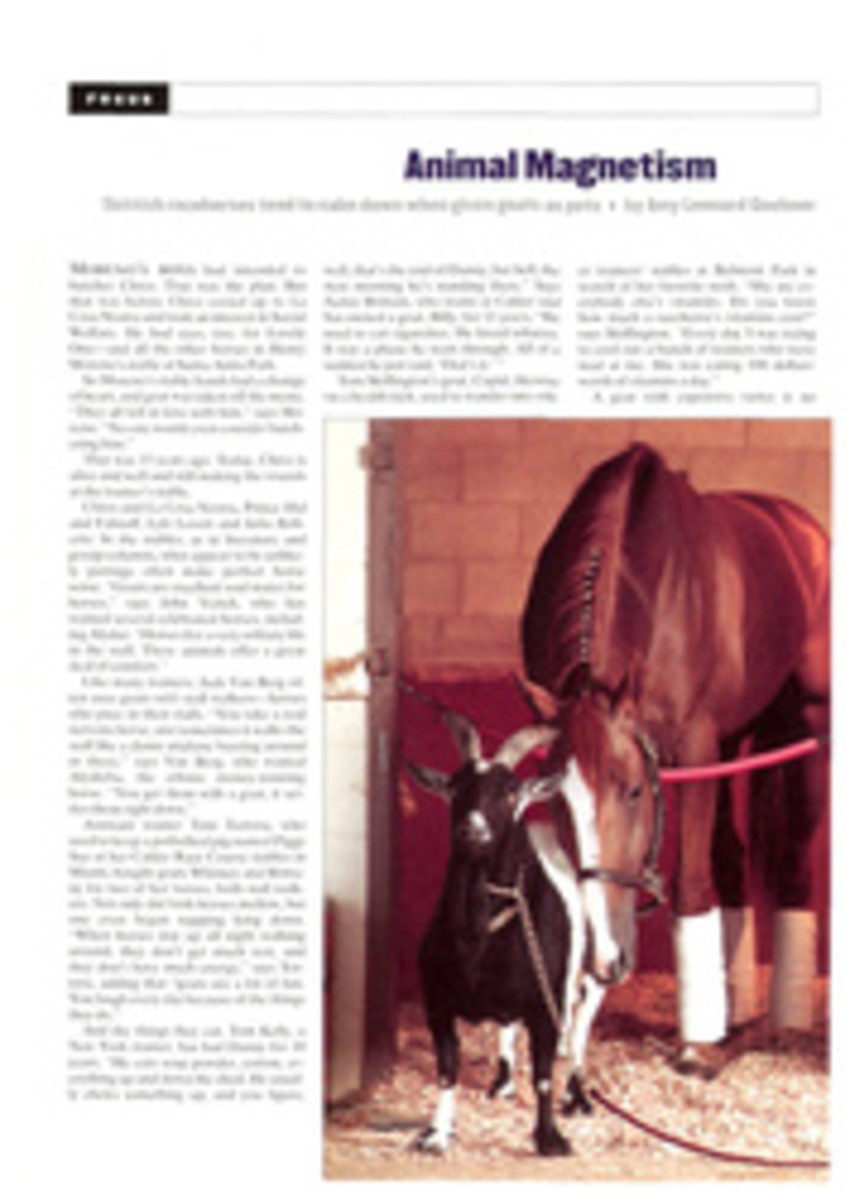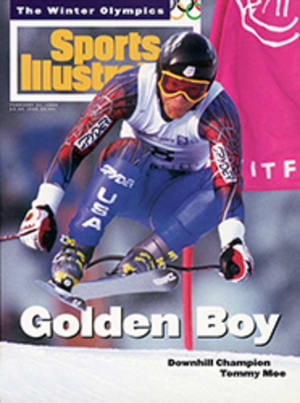
Automated Attitude
At the end of a day spent working in a New Jersey warehouse, Richard Murphy finds peace of mind by pummeling what he prizes most. More than 50 times a minute, with the aggressiveness of a man fighting for his life and the precision of a practiced boxer, he pounds his greatest creation. "This is all I have now," Murphy says. "I have given up everything financially and nearly everything socially. I'm so far into it, I can't turn back."
Murphy's passion is SoloSpar, his patented mechanical heavy bag. For the past six years, the last three with his business partners, Ron and Joe Ferrara, Murphy has fine-tuned his bag much the same way managers develop young prizefighters. The product of his refinements is a 200-pound bag that jukes, shakes and even talks trash like a journeyman heavyweight. "I know that this sounds weird, but it was like a vision," Murphy says of his invention of the device. "I had to follow it all the way through until something materialized."
SoloSpar—which unlike a sparring partner lacks arms, legs and, of course, a brain—can be controlled by computer or by using its two joysticks. Three counter-rotating poles attach the bag to a track on the ceiling and allow the bag to twist and lunge from different angles, simulating a boxer's movements. The bag can be programmed to attack at more than a dozen different speeds, and seven yellow circles pinpoint the most effective places to slug the bag.
But, in the tradition of boxing's greatest champs, SoloSpar refuses to acknowledge a damaging blow. A strike to the "stomach" circle elicits the response, "My grandmother hits harder than you." A jab to the "ribs" earns the retort, "Come on, is that all you've got?" The machine's only weak spot is a red circle placed directly below the "belt." When that circle is hit hard, the bag bellows, "Damn, that hurt."
Murphy, 39, built the first version of SoloSpar in 1987 when he grew tired of working out on a stationary heavy bag. A former vice-president of a New York City vocational school before it folded in 1986, Murphy began studying manuals on gears and sprockets. After digging up some scrap iron, he constructed a bag and a roller mechanism that hooked into an oval track a friend had made and bolted to the ceiling in Murphy's garage in Warren, N.J. The force of a punch moved the bag around the track. "When I first saw it, I was so excited because I had built it," Murphy says. "It really motivated me, the way one little bit of success makes you go for more."
After a few years of tinkering with his contraption, Murphy spent several months visiting local industrial trade shows hoping to learn more about design and mechanics. Ron Ferrara, 48, who is the president of a conveyor company in Perth Amboy, N.J., met Murphy at a show in 1990 and was intrigued by his contraption. "I am kind of a tinkerer; new inventions always interest me," Ferrara says. "Plus, doing the same thing every day can get boring, and SoloSpar is definitely different from conveyors." Within two weeks Ferrara had built a more sophisticated version of SoloSpar, closer to the one available today, and offered Murphy a partnership deal.
Three years later Murphy and his friends are still the machine's most frequent sparring partners. Ferrara blames the recession and a drive for perfection as the reasons the product has yet to reach the market officially. But Ferrara's conveyor business has picked up in recent months, enabling him to devote more money and manpower to the SoloSpar project.
"The bottom line is that this is a workout, and no one is going to get hit," Murphy says. "First of all, it is exercise. For that reason, anybody will want to get in the ring."
Well, almost anybody. Don't expect professional boxers to incorporate SoloSpar into their daily workouts. Former champion. Bobby Czyz experimented with SoloSpar during his recovery from a serious car accident. Besides the cost of the bag—roughly $20,000—which he says professional gyms can't afford, pros would find the machine of little use in their training.
"Professional boxers know how to shadowbox and how to move around a stationary heavy bag to make it useful for their legs and arms, so we don't really need it," Czyz says. "But in regular gyms it would be amazing; people would get a kick out of the fact that it talks. It forces the person to move around and, because it can also come at them, to defend themselves as well."
Murphy concedes that a professional boxer wouldn't find SoloSpar as useful as would an amateur who worked all day in an office. "Picture in your mind someone who has made you angry that day," Murphy says. "There he is, right there in the middle of the bag. A jab, then a combination really gets the stress out."
PHOTO
MANNY MILLAN
After six years of tinkering, Murphy believes he has finally hit the spot with SoloSpar.

